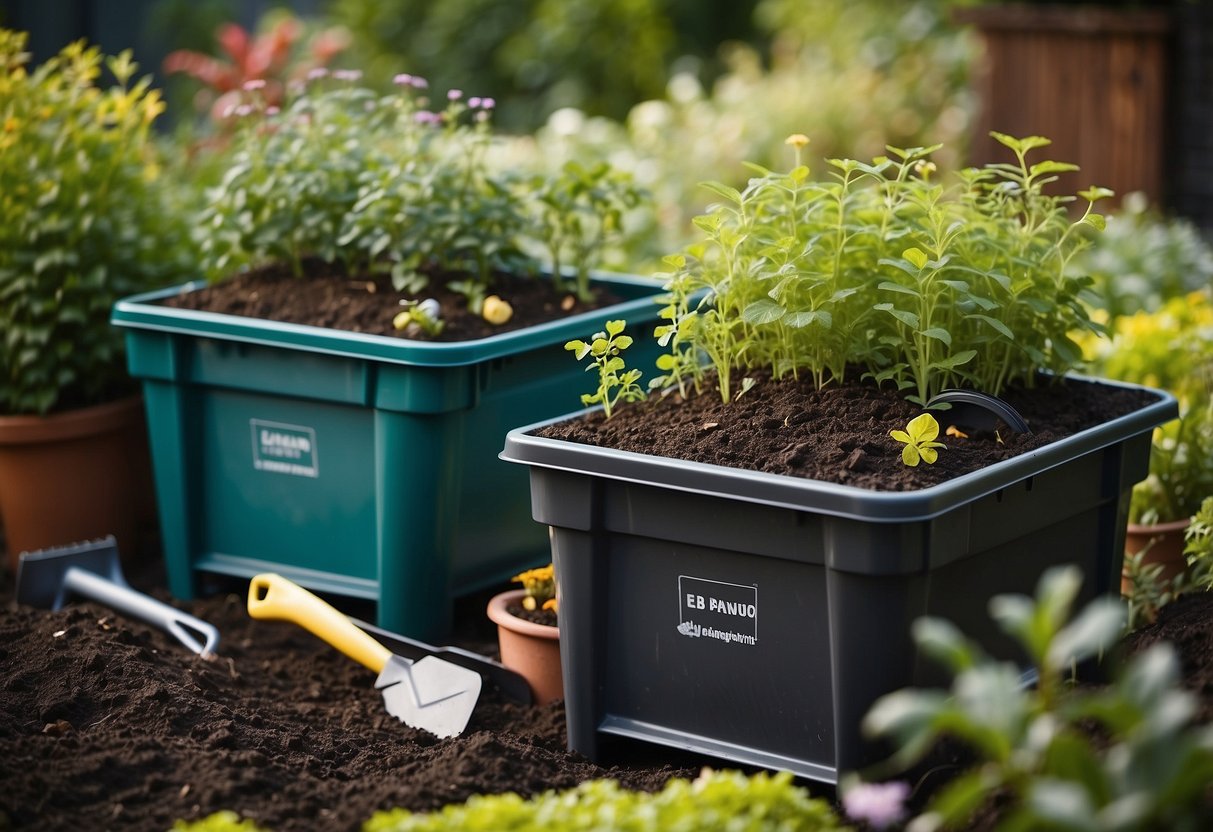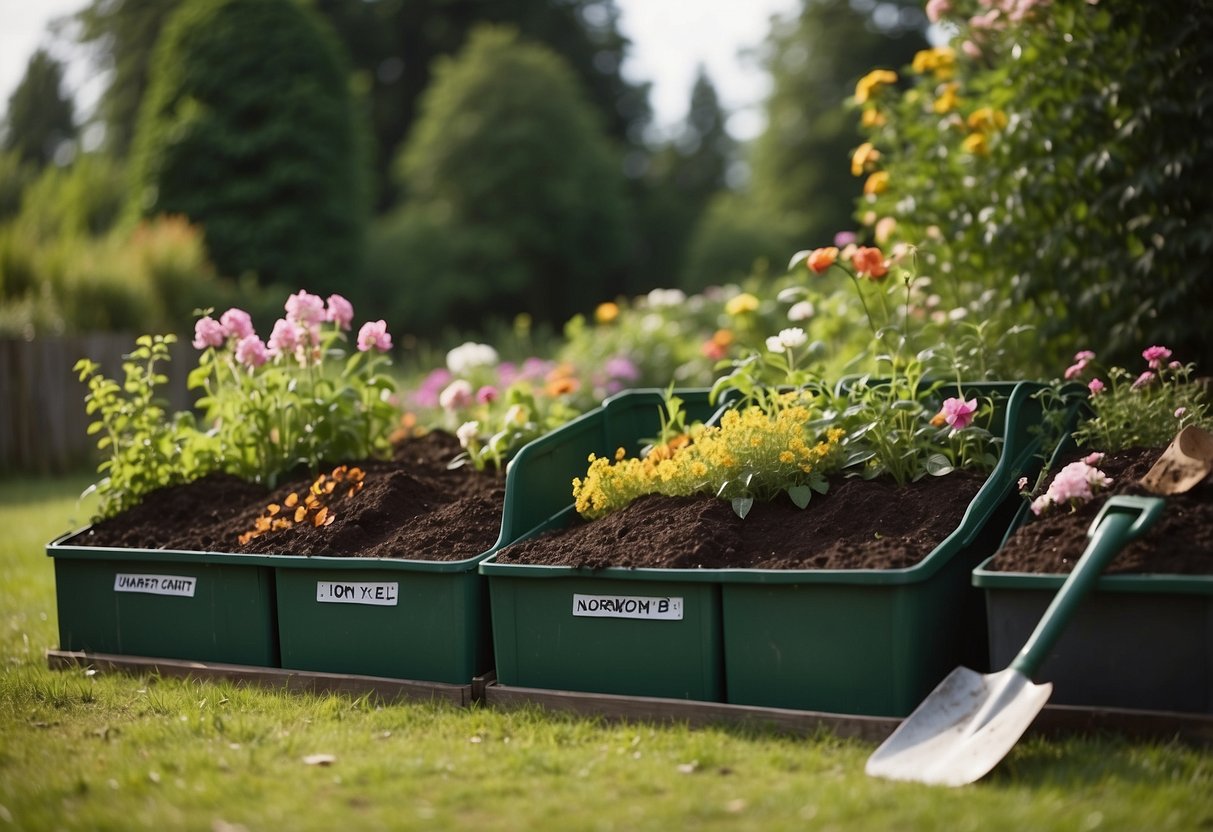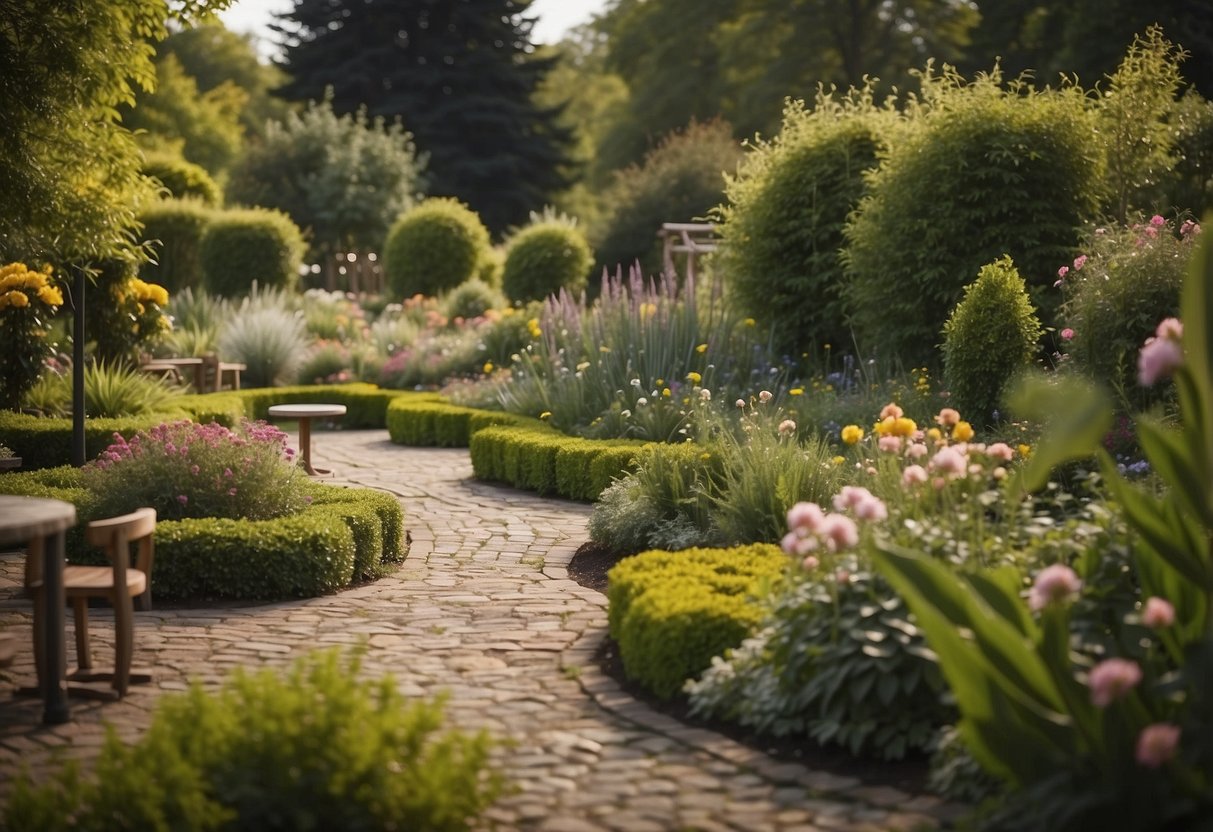Ideas to Tidy Up My Garden: Simple Tips for a Beautiful Outdoor Space
Keeping your garden neat and tidy can feel like a challenging task, but with a few simple ideas, you can transform your outdoor space into a serene and well-organized area. Whether you have a sprawling yard or a small patio garden, there are plenty of creative ways to enhance its beauty and maintain it easily. Learning how to make your garden look polished not only improves its appearance but also makes it a more pleasant place to spend time.

You’ll discover that small changes can make a significant impact on the overall look and feel of your garden. From organizing your plant pots to adding a few well-placed decorations, it’s all about finding what works best for your space and style. So, let’s explore some practical tips to keep your garden looking its best year-round.
1) Install Raised Garden Beds

Raised garden beds can make your garden tidy and beautiful. They help keep plants organized and contained.
Building raised garden beds is simple. Many designs use cedar wood, which resists weather and insects. You can also make them from recycled materials to keep costs down.
Plants grow well in raised beds because you control the soil quality. A mix of garden soil and compost works best.
Adding a trellis can support climbing plants like tomatoes and cucumbers, adding both function and style to your garden space.
For more ideas, check out these raised garden bed designs.
2) Use Vertical Planters

Vertical planters are a fantastic way to tidy up your garden and add more greenery. They save space and are perfect for small yards or patios.
You can use an upcycled palette garden or add planters to a wall or fence, like a wood slat fence with planters.
A strawberry tower garden is a simple project to use leftover materials. Vertical herb gardens using hanging file organizers also offer creative ways to grow more in less space.
3) Create a Compost Area

Creating a compost area is a great way to recycle organic waste and enrich your garden soil. Start by choosing a sunny spot in your yard.
Build a compost bin using wood, wire, or buy a pre-made one. Layer kitchen scraps, yard waste, and make sure to mix greens and browns to keep things balanced.
Keep the compost moist but not soggy, and turn it regularly to speed up the decomposition. This will result in rich compost you can use to improve your garden soil.
For a detailed guide, check out this tutorial.
4) Add a Tool Shed

A tool shed can be a game-changer for organizing your garden.
It gives you a dedicated space to store your gardening tools and supplies.
Instead of cluttering your garage, tools like rakes, shovels, and pruners have a cozy home.
Consider adding PVC pipe tool hangers to keep things neat.
You can also use compact drawer units for small items like screws and seeds.
5) Designate Paths with Gravel

Creating paths with gravel in your garden can be both practical and beautiful. Gravel paths are easy to install and maintain, making them a popular choice.
Gravel provides a versatile and durable solution for your garden paths. It can last more than 10 years with proper maintenance, ensuring a long-term improvement to your garden.
By choosing gravel for your pathways, you enhance the overall appearance while keeping the garden tidy and organized. Gravel’s versatility and durability make it a favorite among homeowners.
6) Incorporate a Water Feature

Adding a water feature can make your garden feel more peaceful and attractive. You can choose from various options like a raised pond, a modern garden pool, or a small bubbler fountain.
If you prefer something simple, try a stand-alone pond. It can fit nicely on a patio or garden nook. Ready-to-assemble kits make installation easy and quick.
A bubbler fountain can add both style and a calming effect to your outdoor space. It works well in small gardens or as a central piece in larger areas.
7) Add Garden Lighting

Garden lighting can make your outdoor space magical. Use globe-shaped lights to add a unique touch to your garden. These lights work well in gravel gardens or xeriscapes.
Consider hanging LED curtain lights from pergolas or along fences. These lights create a curtain of sparkling illumination, adding depth to your space. You can also place LED sticks in container gardens to highlight your plants.
For a fun DIY project, try making lanterns out of cans. Paint them in the color of your choice and hang them. This creates a cozy and personalized lighting option.
8) Use Mulch to Suppress Weeds

Mulch is a great way to keep weeds out of your garden. By adding a layer of mulch, you can block sunlight from reaching weed seeds, stopping them from sprouting.
Use organic materials like wood chips or straw. Spread 2-3 inches of mulch to be effective.
Avoid piling too much mulch around plant stems. This can harm your plants. For more on the benefits of using mulch, check out this guide.
9) Plant Perennials

Planting perennials can make your garden both beautiful and easy to maintain. These plants come back every year, so you don’t have to replant them.
Consider adding daylilies for a pop of color. They come in purple, yellow, red, and more.
Catmint is also a great choice. It blooms in late spring and attracts pollinators.
For a fragrant option, Garden Phlox is perfect. It attracts butterflies and hummingbirds, making your garden lively.
10) Install a Drip Irrigation System

Installing a drip irrigation system can help you save water and keep your garden looking neat. Drip irrigation delivers water directly to the roots, reducing evaporation and runoff.
You can start by gathering the necessary equipment, like tubing, drippers, and connectors. Be sure to connect the header to your water source securely using a garden hose.
Once everything is connected, place the drippers near the root zones of your plants. It’s a simple way to ensure your plants get the right amount of water while maintaining an organized and tidy garden.
Planning Your Garden Layout

When planning your garden layout, the key steps include evaluating your space and creating distinct zones. This approach helps you make the best use of your garden’s potential and ensures a more organized, productive area.
Evaluating Your Space
Begin by assessing the size and shape of your garden. Use a measuring tape to get accurate dimensions. Note any shaded areas, sunny spots, and existing structures like sheds or trees. This helps in deciding where to place different plants or garden features.
Next, consider the soil type. Is it sandy, clay, or loamy? Different plants thrive in different soils, so knowing this will guide your choices. A simple soil test can provide valuable information.
You should also think about water access. Ensure your plants are conveniently located near a water source, or set up an efficient irrigation system. Watering can be tedious, so make it as easy as possible.
Lastly, look at your climate zone. This will tell you what plants grow best in your area and the ideal planting times. Local gardening stores or online resources can help you determine this.
Creating Zones
Once you’ve evaluated your space, it’s time to create zones. Divide your garden into distinct areas based on plant needs and garden activities. For example, group plants with similar sunlight and water requirements together.
Raised beds can help with organization and soil management. They are great for vegetables and can prevent soil compaction. You might have an herb bed, a vegetable bed, and a flower bed, each with appropriate soil and spacing.
Consider adding a relaxation zone. A small seating area or hammock can make your garden a pleasant place to unwind. Place this zone in a shady or scenic part of your garden.
Don’t forget pathways. Clear, defined paths make it easy to navigate your garden without stepping on plants. Use materials like gravel, wood chips, or stepping stones to create durable and attractive paths.
By carefully planning and zoning, you can create a well-organized and enjoyable garden space.
Organizing Tools and Equipment

Keeping your garden tools and equipment organized can save you a lot of time and effort when gardening. You’ll also protect your tools from damage and make your work more efficient.
Storing Tools Efficiently
To store your tools efficiently, start by using wall-mounted racks or pegboards. These help keep tools off the floor and make it easy to see everything at a glance. Invest in sturdy hooks and shelves to keep the tools in place securely.
Labeling storage areas can also be helpful. Use tags or markers to designate spots for specific items, like shovels, rakes, and pruners.
Materials needed:
- Wall-mounted racks
- Pegboards
- Sturdy hooks
- Labels/markers
Another tip is to repurpose old items. Use a spigot-handle garden tool rack to hang tools. This adds a rustic touch and is very practical. You can learn more about making one from old knobs and spigots.
Maintenance Tips for Equipment
Maintaining your tools ensures they’ll last longer and work better. First, always clean your tools after each use. Remove dirt and debris to prevent rust.
Sharpen blades on pruners, shears, and hoes regularly. Sharp tools work more efficiently and are easier to handle. You can use a simple sharpening stone or file for this task.
Oil moving parts to keep them from sticking. A bit of household oil applied to hinges and joints can help tools function smoothly.
Store tools in a dry place to avoid rust. Use a waterproof storage bin or cover them with a tarp if you don’t have a shed. Hanging your wheelbarrow is a great way to save space and keeps the wheel from getting flat spots. Check out these wheelbarrow storage tips for more ideas.
By following these tips, you’ll keep your garden tools and equipment in top shape, making your gardening experience much more enjoyable.
Eco-Friendly Tidying Ideas

Keeping your garden tidy while being kind to the environment is possible with some thoughtful practices. Two effective strategies are utilizing composting solutions and using recycled materials.
Composting Solutions
Composting is an excellent way to turn organic waste into nutrient-rich fertilizer for your garden. Instead of tossing kitchen scraps, create a compost bin or pile in your backyard. You can add items like vegetable peels, coffee grounds, and eggshells.
Benefits:
- Reduces waste: Keeps biodegradable materials out of landfills.
- Improves soil: Adds essential nutrients back into the soil.
- Cost-effective: Saves money on purchasing commercial fertilizers.
For the best results, balance green (nitrogen-rich) and brown (carbon-rich) materials. Green materials include grass clippings and vegetable scraps, while brown materials are fallen leaves and cardboard. Turn the compost regularly to speed up the decomposition process.
Using Recycled Materials
Using recycled materials in your garden can greatly reduce your environmental impact. Start by repurposing old containers, bottles, and other items into planters.
Ideas:
- Tire planters: Paint old tires and use them as colorful planters.
- Plastic bottles: Cut and use them for small seedlings or as watering aids.
- Broken pots: Use pieces for garden decorations or drainage aids at the bottom of other pots.
These practices not only help in cutting down waste but also save money. Creating DIY garden structures, such as trellises from old wood or pallets, is another eco-friendly practice. This approach promotes sustainability by reducing the need for new materials. Using recycled items creatively can also add a unique charm to your garden.







